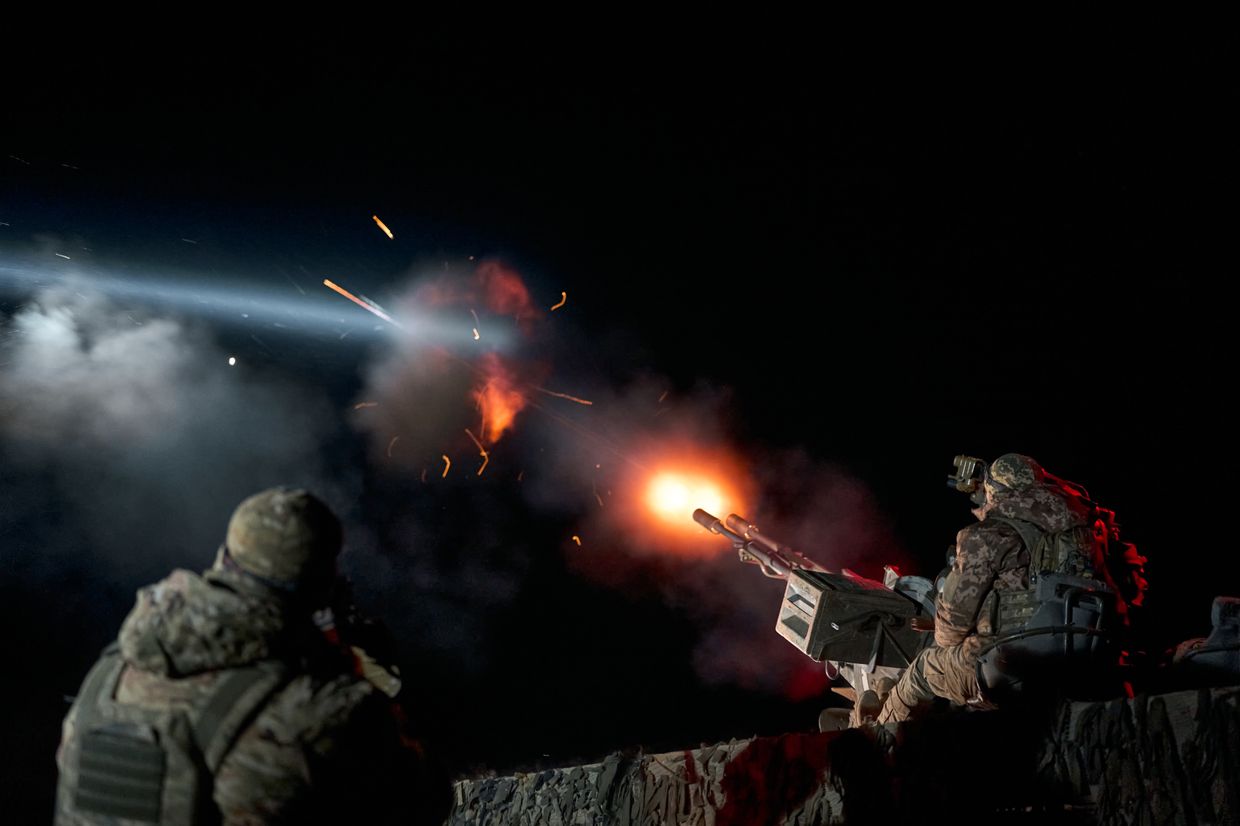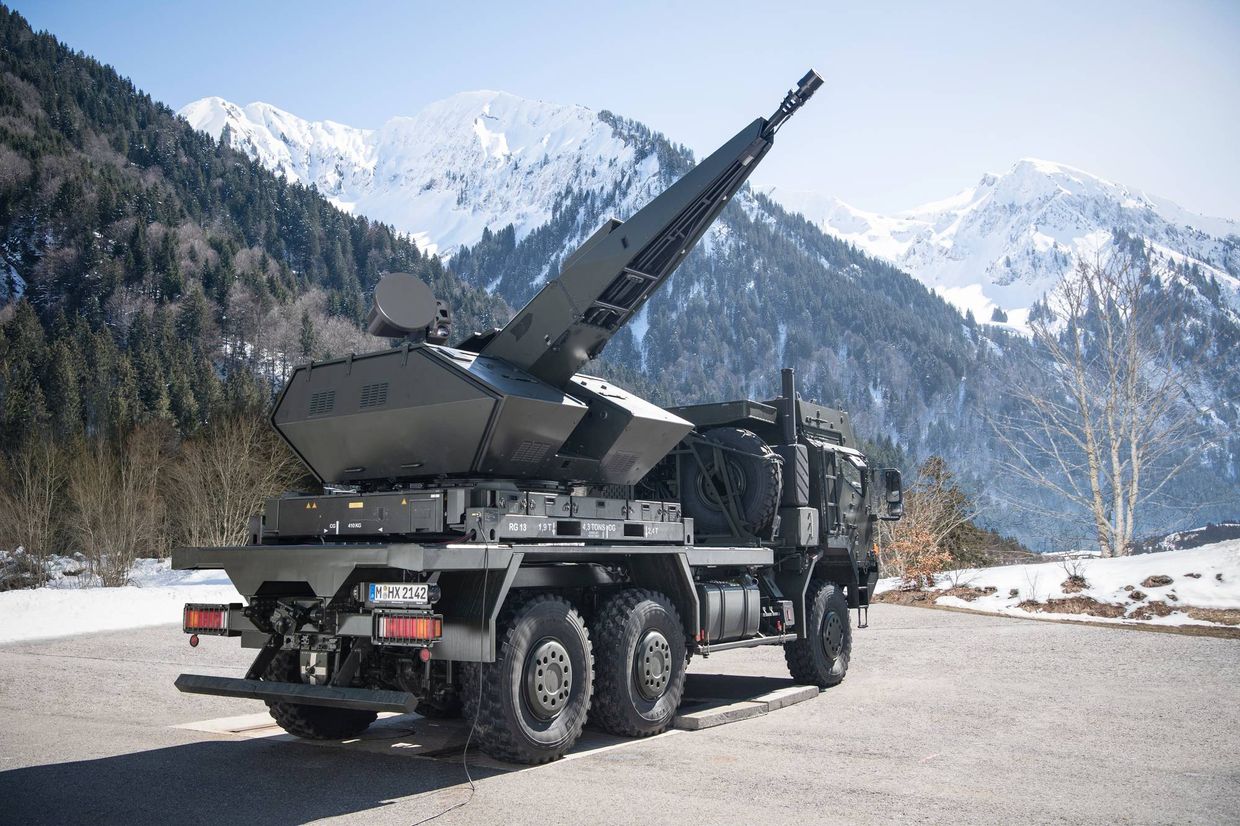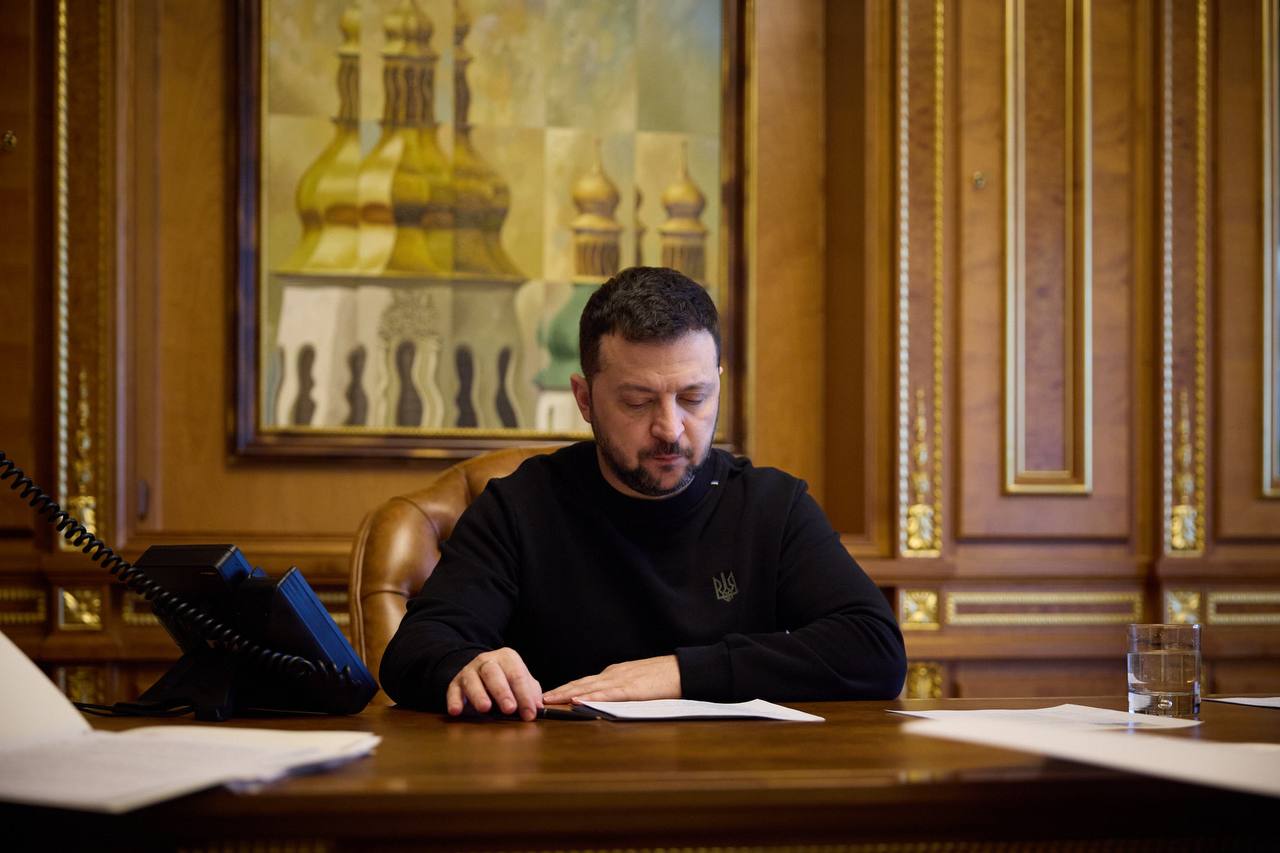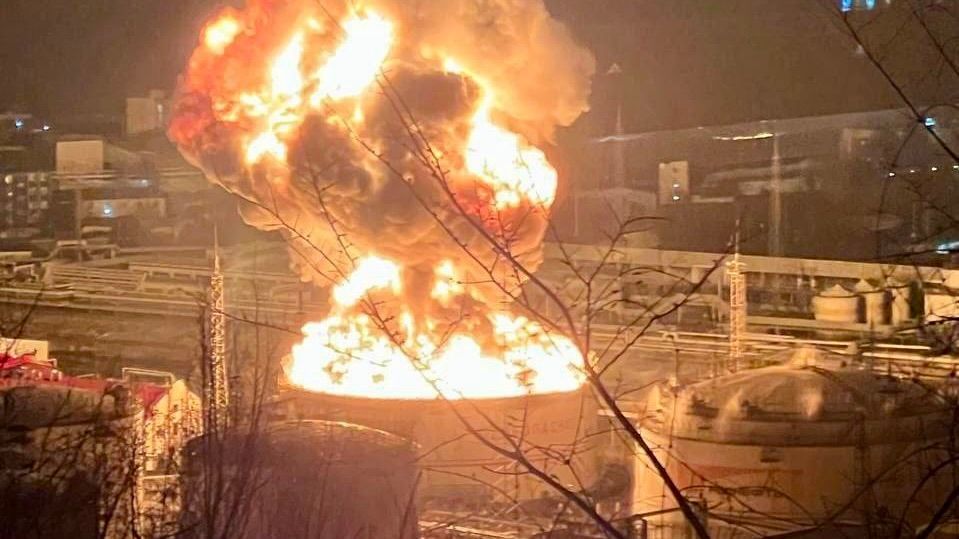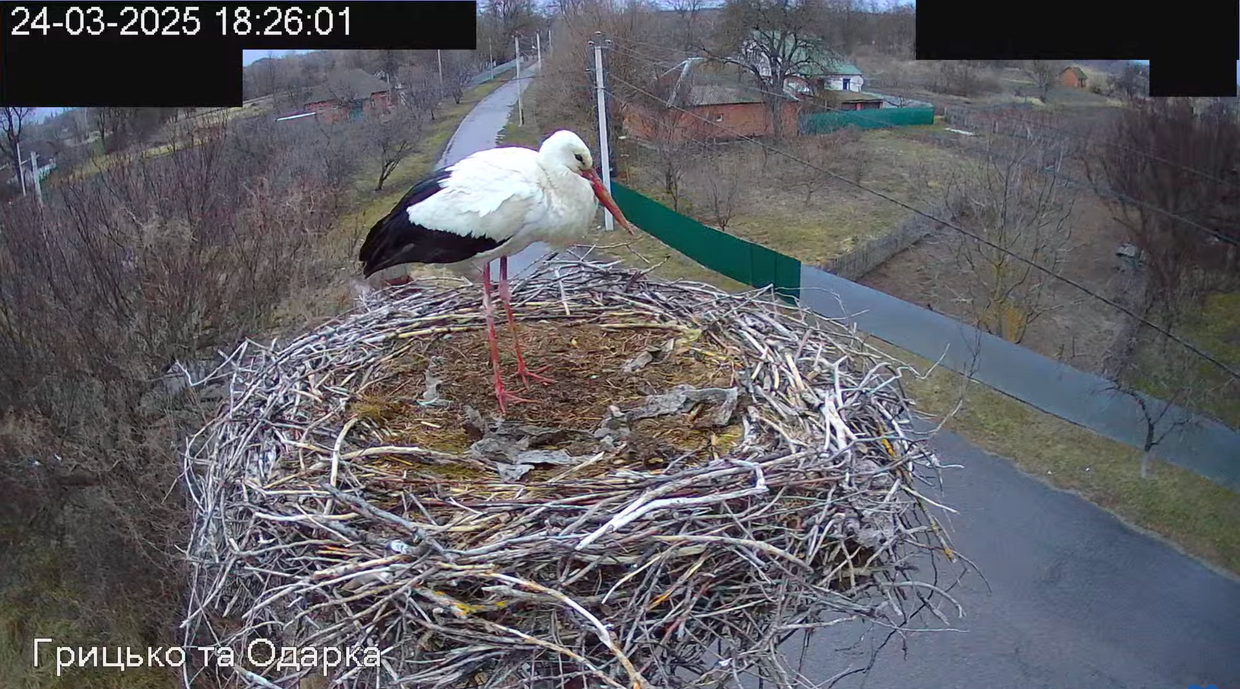Ukraine has just received the second Skynex air defense system from Germany as part of the latest package of military aid, the German government announced on April 29.
It's the latest addition to Ukraine's struggling air defenses, running low on ammunition due to delays in U.S. aid but bolstered in recent weeks by pledges of further missile systems such as the now legendary Patriot.
What is Skynex?
According to its German manufacturer Rheinmetall, Skynex is a "networked air defense" that provides "a highly effective layered protection shield against a wide spectrum of air threats" and serves as "the necessary answer against saturation and swarm attacks in the future."
In short, it's a big, powerful, and highly accurate gun that is very effective at shooting down drones.
Why is it needed?
Big ticket air defense systems like NASAMs, IRIS-T and Patriot can easily shoot down drones but uisng them for this purpose has one major drawback – cost.
An Iranian-made Shahed drone, is, in terms of weaponry, cheap. Export versions cost around $193,000 and those made by Russia domestically, only about $10,000-$50,000.
One NASAM missile costs from $600,000 to $1 million. A Patriot missile is nearly $4 million. A relatively cheap IRIS-T missile is still around $450,000.
According to Ukraine's Air Force, Russia has fired over 4,600 Shahed drones as of late February over the two years of full-scale war, so using air defense missiles to shoot them down is not a financially viable option in the long term.
"One of the key features of the war is the use of relatively low-cost delivery systems such as drones," Martin J. Dougherty, weapons expert and author of "Aircraft, Tanks and Artillery of the Ukraine War," told The Kyiv Independent.
"Defense against such weapons requires a low cost per engagement and the ability to eliminate multiple threats in a short time.
"The difficulty of detecting, tracking, and hitting such small targets is also considerable."
Ukraine has relied on systems like the German-made Gepard and the more basic and not always effective tactic of shooting them down with large 50-caliber machine guns mounted on trucks.
Close one. Ukrainian mobile air defense units in Kharkiv oblast trying to repel a Shahed drone attack. The drone hits the ground just tens of meters away. pic.twitter.com/8xuHNPwO7t
— NOELREPORTS 🇪🇺 🇺🇦 (@NOELreports) February 27, 2024
Skynex is a middle ground between the two – a highly accurate system that can down drones but uses ammunition far cheaper than a Patriot missile.
How does Skynex work?
Skynex is a modular system, meaning it can be configured in a variety of ways depending on the threat.
Details of those systems sent to Ukraine have not been made public but a version featured in a Rheinmetall promotional video from 2022 would seem a likely candidate.
In it, a Oerlikon Revolver Gun Mk3 – used in the Skynex system and capable of firing at a rate of 1,000 rounds per minute with a range of 4,000 meters – mounted on a truck takes out a swarm of small FPV (first-person-view) drones in a single burst of fire.
According to Rheinmetall's rather vague description, Skynex uses a variety of "sensors and effectors," as well as "one or several medium-range radars" to detect and identify the drones, all coordinated through the Oerlikon Skymaster Battle Management System.
But it's the ammunition that is key – Skynex fires 35mm Oerlikon Ahead rounds. Instead of directly striking the target, they explode just before they reach it, releasing a cluster of tungsten sub-projectiles which increases the chances of successfully destroying the drone.
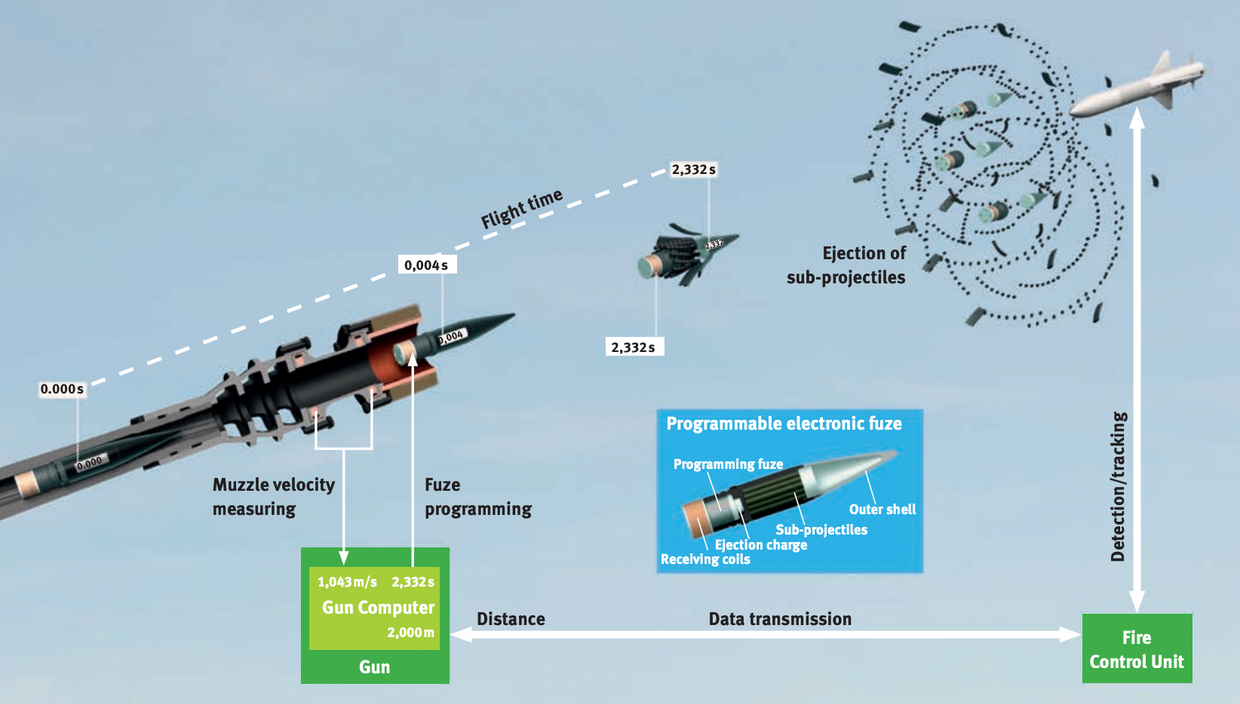
Crucially, it's also relatively cheap – taking out a target costs just over $4,000, significantly less than even the lowest price estimate of a Shahed.
According to the manufacturer, it can also in theory take down cruise missiles, though it's not currently known if it has done so.
"Skynex was developed to counter small, low-cost threats such as mortar rounds. This capability has transferred well to the emerging drone threat, and may be essential to a layered air defense system," Dougherty said.
Is Skynex a game-changer?
As far as has been reported, Ukraine is only in possession of two Skynex systems, far too few to have a decisive impact on the war.
But while their locations are not public, given their effectiveness, it can be safely assumed they're protecting at least two very important targets – possibly even their longer-range and more powerful big brothers.
"High-value missile systems, capable of engaging enemy aircraft at long range, may be vulnerable to attack by small, hard-to-track loitering munitions," Dougherty said.
"It may be that short-range air defense systems such as Skynex will be necessary to keep the big hitters in the game."
